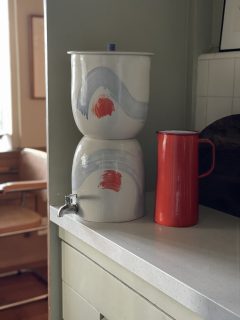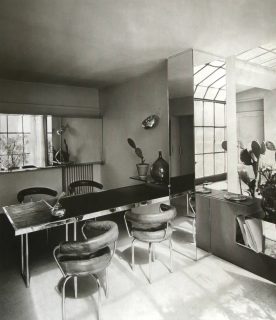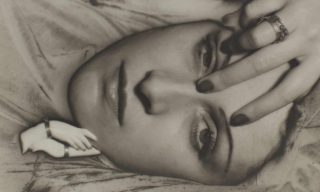A Moment with Jane Dillon
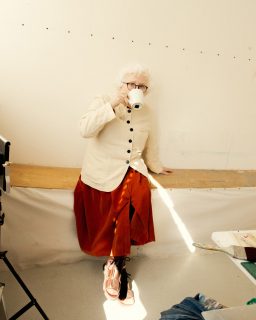
by Ellie Hay
If the story of modern design has long been dominated by men, the women working in the industry are finally gaining recognition. Phaidon book ‘Women Made: Great Women Designers’ is part of that change. As well as more well-known women including ceramicist Lucie Rie and furniture designer Ray Eames, there’s names to get acquainted with, like Jane Dillon. We recently spent an afternoon in her studio in Camberwell, South London enveloped in colour and conversation, chatting about her impressive career, working with Memphis founder Ettore Sottsass, and her transition from design to painting.
As one of just two women in her class, Jane graduated from the Royal College of Art in 1968 with her celebrated ‘moveable chair’, created under her maiden name Jane Young. The design, featured in Woman Made was a functionalist experiment in ergonomics. Set purposely off-centre, the seat transforms as the sitter revolves, offering various positions, “I wasn’t really asking people to sit on a chair like that, it was a concept that rooted in how we really use chairs, and why we have objects.”
After the Royal College of Art, Jane travelled to Italy to work in the Milan studio of designer and architect Ettore Sottsass, who went on to start the influential design studio , Memphis. It was here that she specialised in colour studies, contributing to Sottsass’ ‘Synthesis 45’ furniture system for Olivetti as well as his iconic chair designs. “I had the best job in the world!” she says now. The feeling was mutual. Sottsass championed Jane and with his support her Moveable Chair was quickly put into a limited edition production. Those in the design community took notice – among them premier futurist Joe Colombo – and she was featured in leading design and architecture publication Domus.
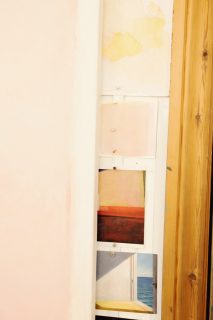
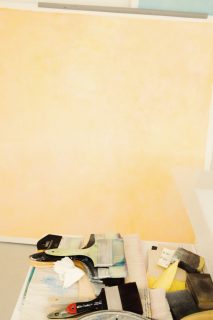
Jane returned to London, marrying fellow RCA alumnus Charles Dillon in 1972. Inspired by American designers Charles & Ray Eames they founded Charles & Jane Dillon Associates. Their first collaborative project won the 1972 Dunlopillo Design Award whose jurors included mid-century design behemouths Dieter Rams and Kenneth Grange. Charles & Jane Dillon Associates were then twice selected for the ADI-FAD Delta Awards for their seating ranges Actis and Jobber — which sold a million units across America while their Cometa ‘Kite’ Light (1972) for Santa Cole is considered an influential piece of British design. Their client list included Conran, Habitat, Herman Miller and Casas. Archives of their work are now held at the V&A and Museum of Contemporary Art Barcelona.
As someone who designed furniture for more than five decades, Jane understandably has a holistic approach to how we use the designs in our homes. “The thing with chairs is, 25% of the time, they are sat on,” she says. “But the rest of the time they have coats on, are stood on, and they are often there just to say ‘hey — look at me!’”
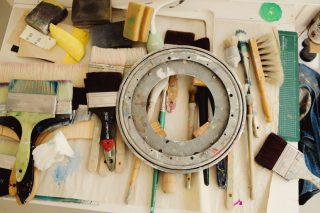
After Charles passed away, Jane eventually found new partners in Peter Wheeler and Floris van den Broecke. In the late 90s she collaborated with ceramicist Janice Tchalenkob extending her design practice into glassware and textile design installations. It’s unsurprising Jane has collaborated with so many interesting people. She is often surrounded by a diverse crowd and her energy is infectious. She taught for 32 years at the Royal College of Art, mentoring bright sparks like Jasper Morrison and Konstantin Grcic.
Jane is a fanatical worker, and took up printmaking in the 00’s, shortly followed by painting. She got more into mono prints and then slowly started to handle paint. She knew she could draw, but explains, “there is drawing, and then drawing in a way that moves somebody.” In the print studio came freedom, “I could make a mess, and I just behaved like a child, getting rid of the ego was probably the greatest thing ever to do. How funny that I spent all those years doing objects, and a painting is an object, but it’s never seen that way, because it’s painting.”
Her work in painting has even changed how she sees interiors. “I considered why people have paintings on the wall, and what is it about them — and it’s so much to do with changing light,” she says. “Rothko always said the great thing about big paintings is that you kind of get inside them. I would agree.”
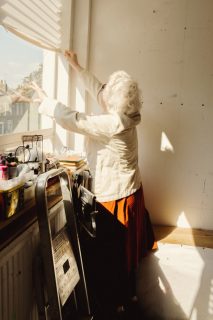
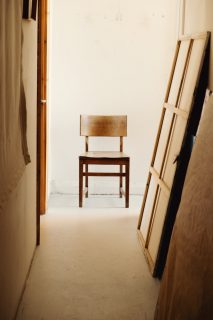
If painting is now her passion, more recognition is on the cards for her design work. Several of Charles & Jane Dillon’s designs were exhibited in the Terence Conran retrospective at The Design Museum and as part of the 175th Anniversary of the Royal College of Art London 2012. And, inspired by ‘Woman Made’, Kering and Phaidon have launched a new online resource to honour female designers past, present and future. It’s about time.
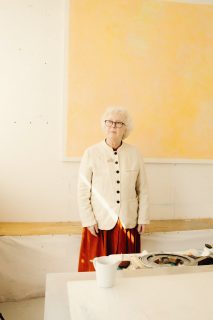

Jacob Lillis is a photographer from Yorkshire living and working in London. His work has been featured in publications including M Le magazine du Monde, The New York Times and FT Weekend. @jacoblillis
Ellie Hay is the founder and creative director of Patter, a platform and content consultancy based in London.
